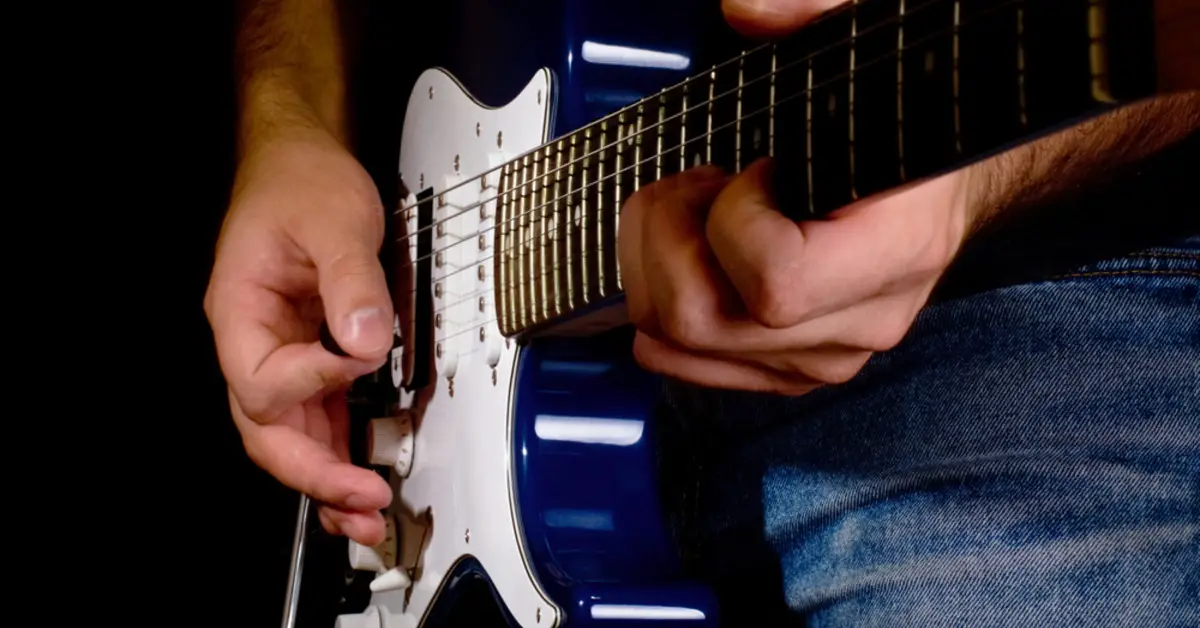A Fender Stratocaster costs between $500 and $2500. Due to its popularity and high demand, the Stratocaster is a target for many counterfeiters. It is becoming more difficult to distinguish a Stratocaster imitation from a genuine one.
However, a real Stratocaster can be distinguished from a fake by a few specific characteristics. The list provided below will guide you as to what you should look into before purchasing a Fender Stratocaster.
Neck, Fingerboard, And Frets
When inspecting a Fender Stratocaster, you should first check and feel its neck’s components. If the frets feel completely smooth and there are no areas without any coating of lacquer, especially where the fretboard and neck rest meet when running your fingers through the instrument, then it is likely that the Fender Stratocaster neck you are inspecting is a genuine one. A replica, on the other hand, will feel and look rough right away since the lacquer applied was distributed unevenly.
Fender Logo And Headstock Icons
The logo, emblems, characters, and numerical figures should all be present and accurate for a Stratocaster to be considered authentic. This time, check each logo and sticker’s details. If there are any visible pixels, the Stratocaster is a counterfeit. Additionally, pay attention to the sticker edges that are in place. It is a fake if the sticker looks cheap and seems to have been slapped on by hand.
An authentic Fender Stratocaster, on the other hand, is always smooth, has distinct characters and emblems, and has stickers that have been lacquered over. Remember that many counterfeiters use the numerous Fender headstock logos and icon stickers available online.
Point Connecting The Body And Neck
A genuine Stratocaster may be identified by the point where the body and neck are joined. Inspect the point of connection with your hand. If the edges feel smooth and appear entirely painted, your Stratocaster is an original. Since counterfeiters strive to cut costs to increase profit, a fake one would feel rough and will not be completely painted.
Tremolo Arm Or Whammy Bar
The Tremolo Arm or Whammy Bar is also a component to be checked when determining if a Stratocaster is real. Grab the tremolo and push it up and down; if it moves smoothly and automatically goes back to proper tune after this action then it is a genuine Stratocaster.
On the other hand, if it makes a click, rattle, clunk, or unnecessary sounds afterward, then it is likely to be a fake. Also, you are undoubtedly holding a counterfeit if the tremolo arm feels loose and if the threads in the arm are different from the ones on the bridge.
Pickguard And Stamped Neck Plate
You may check to see if you are holding an original Stratocaster by inspecting the pick-guard and stamped neck plate. The F-stamped neck plate is Fender’s trademark, which indicates that the instrument they released is genuine and of the highest caliber. In order to accurately reproduce the real plate, counterfeiters are forced to work more precisely.
Genuine Stratocaster pickguards and stamped neck plates always have smooth, finely finished edges and are securely fastened to the neck using top-notch nuts and screws. You are holding a fake Stratocaster if the nuts and bolts appear cheap, the plate’s edges feel improperly cut and attached, and the F is not stamped on the plate.
Headstock
One of the best ways to check if your Stratocaster is authentic is to look at the headstock. Your guitar’s string trees should be the first thing you check; if it has just one, it is a genuine Stratocaster. Most replica versions have two string trees in them.
The fender logo and markings are other elements to check on your headstock, although it might be challenging to tell if a guitar is a real Stratocaster based only on the font. A counterfeit has the company’s logo incorrectly colored (pale and pixelated) and awkwardly placed far from the edge.
Another thing to pay close attention to is the Truss rod adjustment hole on the headstock. This hole is filled with fillings on authentic Stratocasters, however, it is left empty on replicas. You should also look at your guitar’s nut; real Stratocasters have synthetic bone nut materials, whereas fakes have plastic ones. The tuning pegs on your Stratocaster should be absolutely straight and aligned; counterfeit instruments have misplaced and crooked tuning pegs.
Certificate Of Authenticity And Serial/Model Number
The best proof that a Stratocaster is authentic is a Certificate of Authenticity. Your Stratocaster’s model, serial number, and manufacturing date are listed on this certificate. The Fender emblem and the logo of the store where it was purchased are imprinted on a legitimate certificate of authenticity.
By entering your Fender Stratocaster’s serial number on the “Fender Stratocaster Lookup” website, you may verify its authenticity. The website will show the manufacturing date and location and whether your instrument is genuine.


